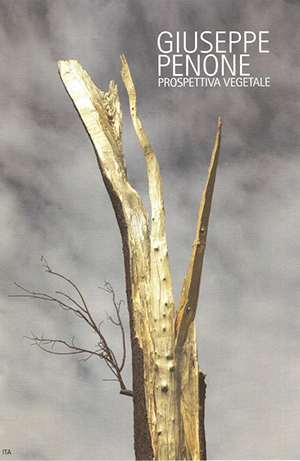
|
|
Prospettiva vegetale. Giuseppe Penone.
5 July-October 5, 2014; Forte di Belvedere e Giardino di Boboli, Florence.
Maria Grazia Vassallo Torrigiani |
|
| |
|
|
|
“Prospettiva vegetale” (Plant perspective) is truly an appropriate title for this exhibition, as it unfolds through a course laid out in a fascinating natural setting. Florence − its Renaissance architecture and the calming flow of the Arno river − frame a postcard-like panorama of the broad open spaces that host Giuseppe Penone’s sculptures, beginning at Fort Belvedere to descend ever downwards to the Boboli Gardens, amidst a lush green stage setting of trees and hedges where nature’s unruliness is tamed by the rigorous geometries of the Italian style gardens.
In a single glance − a solitary act of perception − culture, art and nature meld into one.
But the ‘plant perspective’ is more than just and exhibition; it is also the way that Penone looks at the world. Since his debut in the late ‘60s, the Italian artist − recently awarded the prestigious Premium Imperiale 2014 for sculpture − has embarked on an creative path in which trees represent the key element − a way to reflect on the human condition and contemplate mankind through poetic resonances and analogies with the world of nature.
A tree is a ‘natural sculpture’, and Penone has become the artist-sculptor of trees. As in Versailles in 2013, and the Venaria Reale in Turin, here in Florence his works evoke wonder, emotion, a sense of unease, and prompt questions and reflection. The artist’s chosen material, bronze, gradually takes on the colour of the vegetation, and hence the forms created by nature and the forms created by art commingle to become confused in the perception of the visitor, who wanders about as if in an enchanted garden. Penone compels us to regard trees as living organisms, their ‘bodies’ marked by the traces and memories of past experiences, by the effects of and changes wrought upon them by the ‘objects’ they have come in contact with − the light that governs their growth, heat, cold, nature’s upheavals and much more.
Through a sort of empathic identification, the artist tunes in to their life histories and narrates them, or rather, hints at them. And so here we have trees whose roots stretch upwards toward the sky, as if the world had been overturned by some unimaginable event (figs. 1 and 2]*; trees with skeleton-like branches holding aloft huge stones, apparently hurled there by some nameless catastrophe [fig. 3 and 4]; tree trunks ripped open by lightning to reveal the reverberating inner light of a thin golden patina − vestiges of the sap, the lifeblood of plants, that once flowed there [fig. 5]. And there is more: an enormous felled oak, the tangle of its roots visible, its body resting heavily on the ground, and its five slender branches like fingers reaching out to touch five fragile sapling ‘children’, live trees, planted precisely where the dead tree’s branches touch the ground [figs. 6 and 7]. These are anthropomorphic trees − sorrowful testimonies of pain and destruction, yet moving, tenacious calls to life.
For Penone, the bodies of men, of plants, and even of stones, appear as if they were part of a single living organism, the interconnections amongst which the artist reveals through the poetry of works such as “Anatomie”, in which a block of marble has been carved out to uncover and bring forth the underlying veins crisscrossing the stone’s interior, thereby evoking the blood vessels coursing through the human body [figs. 8 and 9].
Paraphrasing Merleau-Ponty, there is only one “flesh” in the world; we are in nature, and nature is in us.
Read this in
Italian |
Spanish |
*
Photos by Maria Grazia Vassallo